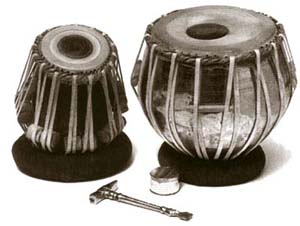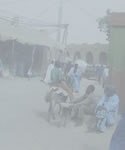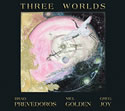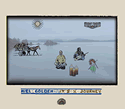
tabla
The Tabla are the most popular and widely used drums found in Northern India. They consist of a pair of tuned drums, played with the hands and fingers. The higher pitched right hand drum, the dahina, is precisely tuned and the lower pitched drum, the bayan, is also tuned but, often to a less definite note. The Tabla’s unique tonal quality is the result of the application of the black spot known as syahi. The syahi consists of a paste that includes iron fillings applied in layers to the goat skin heads (puris). The weight of the syahi allows the player to tune the drums to defined pitches and accounts for their clear, resonant tone.
 It is generally agreed that the Tabla in it’s present form first appeared in the Royal Courts of Delhi in the 17th and 18th centuries. Temple carvings dating back more than 2,000 years reveal pairs of drums that are played with the hands that are similar to the present day Tabla. The Tabla of today can be found in North Indian classical music, devotional music, folk music and the very popular film music. It is in the classical music of India that the high art of tabla playing reaches it’s zenith. The drums are used to accompany vocal music (khyal), instrumental music (sitar, sarod, bansuri, etc), dance (kathak) and in it’s highest form, to play Tabla solo. A Tabla solo in India by a master player such as my guru, Pandit Sharda Sahai can often last well over an hour or two and would be accompanied by a melodic instrument, usually the Sarangi or the Harmonium.
It is generally agreed that the Tabla in it’s present form first appeared in the Royal Courts of Delhi in the 17th and 18th centuries. Temple carvings dating back more than 2,000 years reveal pairs of drums that are played with the hands that are similar to the present day Tabla. The Tabla of today can be found in North Indian classical music, devotional music, folk music and the very popular film music. It is in the classical music of India that the high art of tabla playing reaches it’s zenith. The drums are used to accompany vocal music (khyal), instrumental music (sitar, sarod, bansuri, etc), dance (kathak) and in it’s highest form, to play Tabla solo. A Tabla solo in India by a master player such as my guru, Pandit Sharda Sahai can often last well over an hour or two and would be accompanied by a melodic instrument, usually the Sarangi or the Harmonium.
The Tabla is taught through an oral tradition just like all Indian music. In India this system is known as guru-shishya-parampara. As a percussion instrument, the Tabla has a very large vocabulary. It is taught and played through a series of syllables/strokes known as bols (to speak). Everything that a Tabla player performs can also be spoken or recited. Throughout history, different regions have developed different styles of playing the Tabla as well as different repertoire. There are presently six different styles today known as Gharanas (families). They are Delhi, Lucknow, Farukhabad, Arjrara, Punjab and Benares.
For more information on the Tabla you can contact me. You can also check out David Courtney’s books and Tabla site. Also, check the links that I have provided for further connections with Tabla and Indian music.





